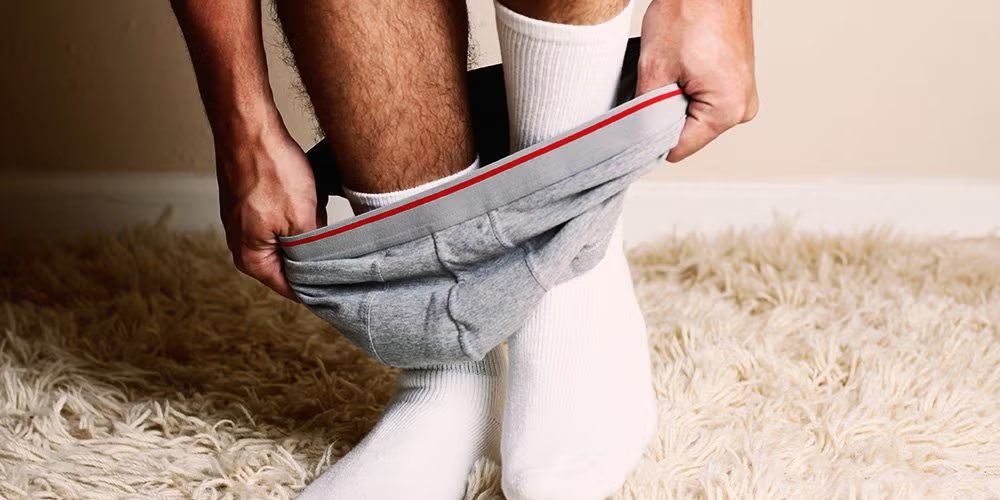Scrotum darkening can feel confusing, especially when the area has never been exposed to the sun. But rest assured, it is not uncommon. Many men notice that the skin around that area is darker than the rest of their body, and while it may cause concern, it usually has a normal explanation related to hormones, genetics, and skin biology.
In this post, we will explore why this difference in skin tone occurs, what factors contribute to it, when it is simply a natural variation, and when it might be worth getting checked by a doctor.
Why Do Men Notice Scrotum Discoloration?
Many men become aware of darker skin in their scrotum and wonder why it looks different from the rest of their body. This observation often leads to concern, especially since the area is not usually exposed to sunlight. However, it is important to understand that such discoloration is completely normal and affects most men to varying degrees.

The skin in that region is more delicate and sensitive, which makes it prone to color changes over time. Factors such as hormonal activity, especially testosterone during puberty, play a major role in deepening skin tone in certain areas of the body. In addition, constant friction from movement or tight clothing can cause the skin to darken gradually as a natural protective response.
Recommended: How to Elevate the Scrotum with Towels
This kind of discoloration is rarely a sign of poor hygiene or illness. It is simply part of how the body adapts and maintains itself. Recognizing that this variation is normal can help reduce unnecessary worry and encourage men to feel more comfortable and confident in their bodies.
Why the Scrotum Is Naturally Darker Than the Rest of the Body
The darker color in the scrotum is mainly caused by how the body produces and distributes melanin, which is the pigment responsible for skin color. During puberty, hormonal changes, especially an increase in testosterone, cause more melanin to be produced in the genital region. This results in a deeper tone that usually remains throughout adulthood.
Friction is another common reason for the darker appearance. The skin in the scrotum constantly rubs against clothing or the thighs, leading to mild irritation over time. In response, the body produces more pigment as protection. Heat, sweat, and moisture can also make the skin tone appear darker as the years go by.
The skin there is also naturally thinner and more flexible, which makes color changes and visible veins more noticeable. Together, these hormonal, genetic, and physical factors explain why that part of the body is naturally darker than the rest of the skin. It is a normal and healthy part of the body’s biology.
Lifestyle and Environmental Factors That May Deepen Color
Several everyday habits and environmental factors can make the skin in the scrotum appear darker over time.
1. Friction from Clothing and Movement
Friction is one of the most common causes of darker skin in that area. When the skin constantly rubs against tight underwear, pants, or the thighs, it can become irritated over time. The body produces more melanin in response, which naturally darkens the skin as a protective measure.
Recommended: Are Tight Underwear Ruining Male Fertility Chances?
2. Sweat and Moisture Buildup
The area often stays warm and moist, especially after physical activity or in hot climates. Continuous exposure to sweat can irritate the skin and lead to pigmentation changes. Wearing breathable fabrics and keeping the area dry can help prevent this darkening.
3. Poor Hygiene Practices

Not cleaning the area properly or using harsh soaps can disrupt the skin’s natural balance. Dirt, sweat, and bacteria may accumulate, causing irritation that results in darker skin. Using mild, fragrance-free cleansers and maintaining daily hygiene can reduce this effect.
4. Aging and Hormonal Changes
As hormone levels change with age, the skin may darken naturally. Reduced elasticity and slower skin cell renewal can also contribute to this change. These are normal biological processes and usually do not indicate any health problem.
5. Body Weight and Friction Folds
Extra body weight can create additional skin folds, increasing friction in the area. Constant rubbing between the thighs or folds can lead to hyperpigmentation over time. Maintaining a healthy weight and wearing looser clothing can minimize this effect.
6. Heat and Environmental Factors
Living in hot or humid environments increases sweating and friction. Continuous exposure to heat keeps the area moist, which encourages irritation and darkening. Staying cool, wearing breathable clothing, and keeping the skin dry can help protect the natural skin tone.
Recommended: Natural Ways to Increase Testosterone for Better Male Vitality
When to Worry
In most cases, a darker color in that area is completely normal and nothing to worry about. However, there are certain signs that may indicate an underlying medical issue and should prompt a visit to a doctor or dermatologist.
You should be concerned if you notice sudden changes in color, uneven patches, or unusual spots that were not there before. Pain, itching, swelling, or a foul odor along with discoloration may also signal an infection or skin condition that needs attention.
Other warning signs include persistent redness, sores that do not heal, or rapid changes in the skin’s texture. While most discoloration is harmless, consulting a healthcare professional ensures that any potential problems are diagnosed and treated early.
Should You Try to Lighten the Area?

In most cases, trying to lighten the skin in that area is unnecessary because the darker color is completely natural. The skin there is more sensitive than other parts of the body, and using harsh creams or home remedies can cause irritation, burns, or long-term damage.
Recommended: Best Herbs For Male Fertility
Some over-the-counter products claim to lighten skin, but many contain strong chemicals that are unsafe for delicate areas. Even natural remedies can cause allergic reactions or worsen the problem if used incorrectly.
If the discoloration is causing significant concern, the safest approach is to consult a dermatologist. They can recommend gentle, medically approved treatments if needed, while also providing guidance on maintaining healthy skin without causing harm.
Conclusion
A darker color in that area is usually a normal and natural part of the body’s pigmentation. Factors such as hormones, genetics, friction, sweat, hygiene, aging, and environmental conditions all play a role in the variation of skin tone. For most men, this is not a sign of poor hygiene or a medical problem.
It is important to pay attention to any sudden changes, unusual spots, pain, or persistent irritation, as these may require medical evaluation. Otherwise, understanding that this discoloration is common can help reduce unnecessary worry and promote body confidence.
Maintaining good hygiene, wearing breathable clothing, and protecting the skin from excessive friction and moisture can help keep the area healthy. Embracing natural variations in skin tone is the safest and healthiest approach.
